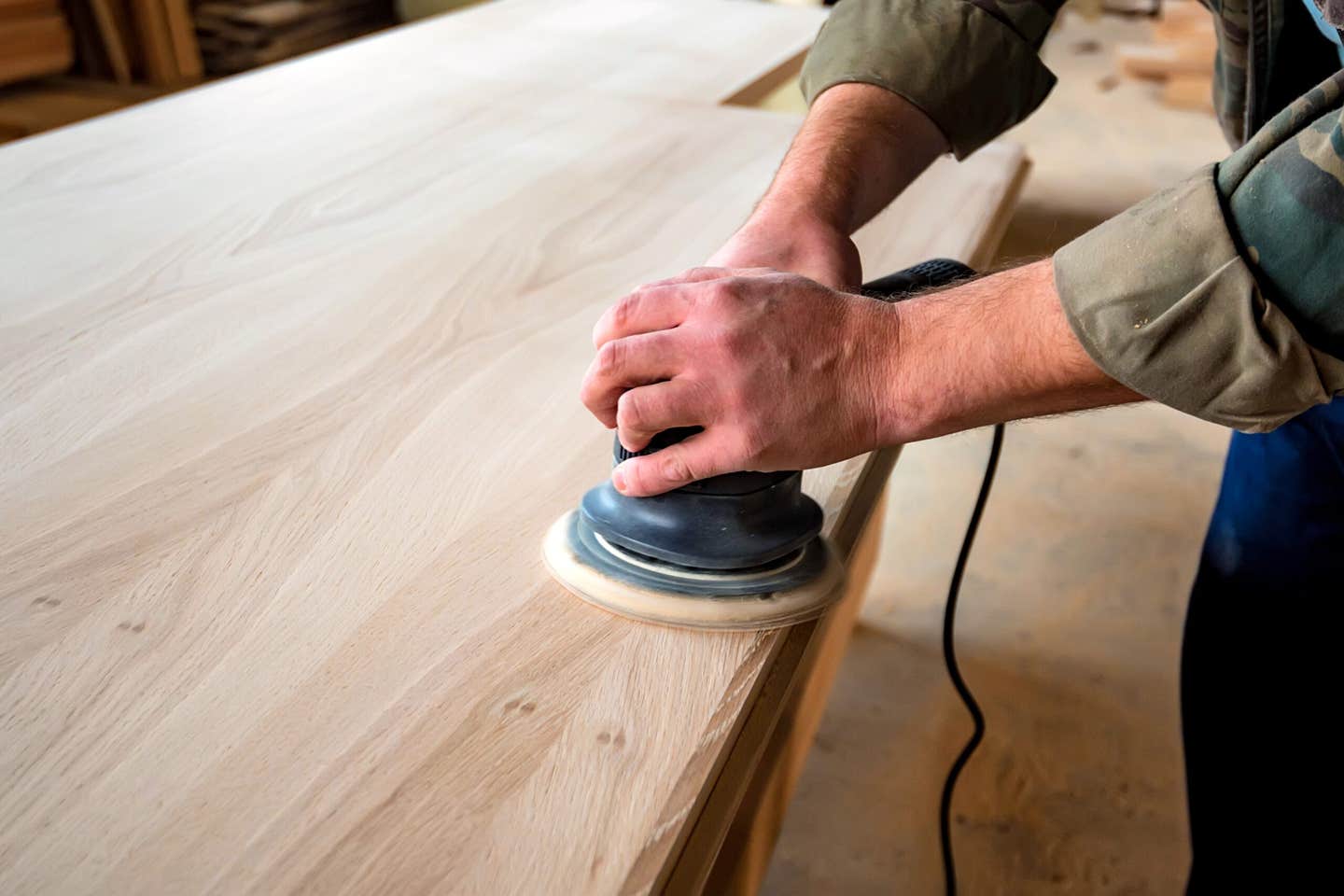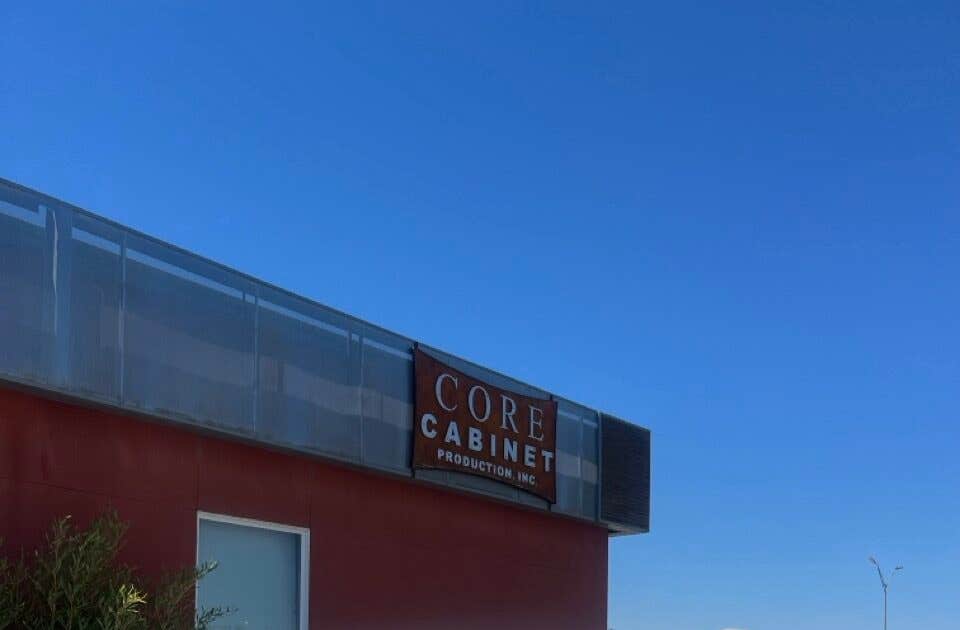Changes on the fly
Keeping up with innovations in the world of CNC software can be a full-time job. One of the challenges is that programs keep evolving and taking on new tasks. There’s…
Keeping up with innovations in the world of CNC software can be a full-time job. One of the challenges is that programs keep evolving and taking on new tasks. There’s a trend now toward providing a single software solution that will help woodshops design and build on CNC platforms, but also include a whole slew of other functions such as accounting, inventory, sales and marketing, personnel issues and even corporate planning.
Another trend to watch is ergonomics: a lot of companies are beginning to expand wireless and touchpad options when it comes to CNC software and these are welcome innovations that are also facilitating another nice feature — the ability to share more easily. That includes being able to make a change on the job site and see it instantly in the office, as well as having much better flows of information between designers and fabricators on the shop floor.
In that mode, KCD Software (www.kcdsoftware.com) recently introduced KCD Touch, which lets a designer work on a touch tablet. One can input data directly — room and wall measurements, critical wall photos and notes, decide on the size, shape and style of cabinets or closets, add details such as custom molding, countertops and edging, even try out colors and change placement or materials — and do it all with just fingertips. Job-site changes can be saved to the cloud and viewed instantly at the woodshop. Other advantages include being able to show customers instantly how a change in materials can change the contract and the salesperson can then have new “paperwork” generated instantly and signed electronically on site and then immediately process an electronic down payment. Touch also ties into KCD’s Workshop, Builder or Commander software to provide a detailed cut list or nests directly to CNC machinery.
ArtCAM (www.artcam.com) offer a software range that includes scalable CAD modeling and CNC machining solutions. Known for easy-to-use and intuitive programming, the latest release is called 2015R2. The various versions include ArtCAM Express for users new to CNC machining, ArtCAM Insignia (which is the introductory 3-D modeling package) and ArtCAM Pro for more complex 2-D and 3-D design and manufacture. The new release includes enhanced 3-D printing options that allow an operator to choose between manually or automatically creating intelligent supports for 3-D printing and adding to a tray for batch printing. A new algorithm divides a design into blocks for faster simulations. There’s more live 3-D modeling, too. For example, the operator can create text that’s ideal for engraving or build unique borders for signs or custom panel art. One can also now interactively blend relief clip art: just pull or push down the height (Z axis) of one piece of art to blend it with another. Other enhancements in 2015R2 include improved relief machining, plus the ability to add fillets such as dog-bone and T-bone to accurately CNC machine slots or add loops for knife cutting. Snap hints make locating hard-to-find vector points easier and it’s now easier to import multicolored vectors from DXF files as either one of several layers and also export several layers at the same time. In-house designers can share preferred settings for the Relief Height Analysis tool and ArtCAM added a search function to locate components in the libraries.
The British are coming
One of the best-known multiprogram suppliers of software, Vero is based in Gloucestershire in the U.K. Among the company’s more familiar products is Alphacam (www.alphacam.com), which has a new configurable browser that displays previews of drawing and parametric Sketcher files. These can now be inserted into the drawing area by simply dragging and dropping, which is a handy option.
Woodshops using Vero’s Cabinet Vision product can go to the company website (www.cabinetvision.com/training) and then scroll down to “Training Information Package” at the bottom of the list. There they will now find the 2016 education schedule in the form of a downloadable PDF file that lists a huge array of online and in-person classes. There are seminars in four of the seven U.S. Cabinet Vision offices, classes held in hotel meeting rooms that are strategically scheduled throughout the country and the option of having an instructor come to the shop. Woodworkers can also learn online with a live instructor or use a training booklet and interactive movies.
Another British firm, Vectric Ltd. was founded in 2005 and is based in Redditch, England. The company develops software for CNC routing, milling and engraving, including familiar products such as V-Carve, Cut2D and Aspire. New versions of Vectric software are now available, with some major enhancements to current features and some powerful new functions designed to create a more fluid workflow. Woodshop programmers and designers can visit www.vectric.com to view product specifics, including a detailed features list, customer stories and video tutorials showcasing the software and its new features. The most significant change in V-Carve Pro V8 is the ability to now import and tool-path a 3-D model (STL, OBJ, etc.), along with the option to import multiple Vectric clip-art models. And the already extensive collection of clip art that comes with Aspire was increased with the addition of 50 more models. Each of these comes in the three Vector Art 3D styles (Regular, Dished and Recessed), so a shop is actually getting 150 new models. This brings the total number of 3-D models included with Aspire to more than 1,300.
If you’re already running Cut2D V1.5, be aware that it has now been replaced by two separate editions — Cut2D Desktop V8, and Cut 2D Pro V8. If you plan to upgrade, the desktop edition is designed for customers with a light-duty CNC machine that is used to cut parts smaller than 24” x 24”. If you want to cut parts larger than this or wish to use production-focused features such as True Shape Nesting or Toolpath Templates, then you will need the new Pro edition of the software. Both editions have had a major overhaul, adding a full set of vector drawing tools and increasing the options for the 2-D tool-path strategies. While the new version can still easily import a vector design and create 2-D tool paths as before, it can now also act as a full design package and more advanced 2-D machining program.
Upgrades available
If you’re running version 3 or 4 of EnRoute, it might be time to upgrade to the new Version 5. The company (headquartered in Salt Lake City and online at www.enroutesoftware.com) has a whole new design interface for 2-D drawing. There is now a contour preview to show you how things will look before you apply them and all of the settings for a particular drawing tool appear at the bottom of the page in a dialog box and not in the workspace. EnRoute 5 also has some new tool-path capabilities to help with manufacturing efficiency and new capabilities that allow for more creative applications. For example, there’s daisy-chain cutting with no lift, a feed-rate calculator, 180-degree entry/exit on open contours and better Open GL tool-path simulation. Nesting is one of the areas with the best improvements: version 5’s new capabilities allow better nesting efficiency, let the operator avoid areas on sheets he/she doesn’t want to cut, create remnants of leftover plates, and easily create multiples of different parts. There are also several new 3-D Relief/Surface tools including Rapid Texture, which can create an endless array of 3-D textures for signs and decorative panels in very little time.
CabinetPro is based in Central Point, Ore., and has been creating both design and manufacturing software (www.cabinetpro.com) since 1986. The company’s new pricing structure (the Lite version starts at $1,225) is making the company’s CNC technology affordable for virtually any cabinet shop. CabinetPro offers free technical support and no annual maintenance fees. The company’s suite of solutions can generate detailed shop and final drawings, floor plans, elevations, perspectives, cut lists, material reports, door reports, bidding, financial charts and reports and panel optimization — all using a single software program that produces everything from the G-code to run a CNC machine to 3-D renderings. That is, it bypasses the exporting of DXF files to CAD/CAM and thus eliminates the need for DXF files altogether. This streamlining reduces compatibility problems with CAD/CAM software, allows technical support to be handled by one company and significantly increases the program’s speed and efficiency.
Speaking of affordable, some new apps from Mozaik (www.mozaiksoftware.com) are designed to let woodshops go paperless, and do it in a very cost-conscious manner. Mozaik’s Paperless Shop Tablet Apps will “dramatically improve your cabinet shop’s communication, productivity, and accuracy,” according to the company. After the job is created in Mozaik, the information can be quickly shared to the new apps. Exporting to a shared folder on a hard drive, a LAN or the cloud makes it easy for anyone to access jobs from a tablet or PC anywhere in the shop. The apps include cut lists, label making and an assembly program that contains a complete list of all items necessary to assemble each product in the job, from cut lists to hardware to accessories.
If you’re running CabMaster, the company’s version 9.0 with PhotoView has been available for a little over a year now. Go to www.cabmastersoftware.com to upgrade. There are four levels — basic, plus, extra and premium — and once the drawings are ready, the designer only needs to press one button to output all the parts for nesting. EzyNest software will take it from there and generate all the CNC and part label files.
The whole shebang
Enterprise resource planning software (ERP) is that concept mentioned earlier where a business can run all of its operations — planning, development, sales, marketing and even CNC — all through a single package. Back in 1976, an engineer named Dick Alexander launched Global Shop Solutions (www.globalshopsolutions.com) in Woodlands, Texas, as an ERP solution for manufacturers in the oil industry. The company is still a family concern, but it now serves about 20 different manufacturing industries in six countries, including woodshops in North America.
Global Shop Solutions encourages woodworkers to interface its ERP software with the woodshop’s CAD program. With a single click, the shop can import CAD files and data, so the latest version of drawings is available to everyone who needs access. Shop-floor supervisors and project managers don’t need to wait for anything to be physically delivered. When they need to reference drawings, they can pull them up on a tablet or screen right at the machine, and always know they are looking at the correct drawing with all the latest changes. The idea is that production staff will no longer be waiting around for updated drawings to be unearthed from somebody’s desk. And when CAD drawings are delivered and viewed within the ERP software, paper copies are no longer necessary. An ancillary benefit is that vendors can no longer use the excuse that they didn’t receive the latest version of a drawing, because electronic delivery of CAD documents not only ensures they have the updated version, it also provides a record of delivery.
Microvellum Software (www.microvellum.com) in Central Point, Ore., develops a family of design, engineering, manufacturing and ERP solutions for the woodworking industry. In March, the company unveiled major enhancements to its Fluid Designer software at the Cabinets & Closets Expo in Pasadena, Calif. The software is based in Blender, a 3-D animation suite used by artists, interior designers, gamers and video editors.
Established in 1986, CIM-TECH (www.cim-tech.com) has headquarters in Orlando, Fla., and is based on the concept of Computer Integrated Manufacturing (CIM). The company’s original concept was that something was needed to bridge the gap between CAD and CAM, so its programmers created a common interface for design and manufacturing. For routers, their solution is the Router-CIM Automation Suite, a complete CNC machine-programming package that combines CAM features with the power of AutoCAD. The new version, Router-CIM 2016, allows a designer to cut Solid models right inside AutoCAD or Mechanical Desktop. The company includes an Inventor link that transfers a model, assembly or drawing view directly into Router-CIM, and the program will then pick up the cutting depth directly from the Solid model.
On the go
MasterCAM from CNC Software LLC (www.mastercam.com) has released a new Community App that lets users stay connected with the MasterCAM community while they’re on the go. The app is downloadable to an IOS device. And the latest version of the CAM program, X9, includes a generic radial chip-thinning calculator that doesn’t require an ISCAR Chatterfree tool. It also features Solid Disassemble, which is a new Model Prep function that takes an assembly and lays each body out on a single plane. It works on models with and without history, imported from other systems, or created from within MasterCAM. There’s a new Multiaxis Link tool-path that allows users to link multiple tool paths together to create a safe linking move between them. It can be used to link any combination of 3-5 axis tool-paths. X9 also has fixture support for MasterCAM Simulator, which now includes the option to display fixtures or not. And the new Analyze tool-path function, which is found in the Analyze menu, displays tool-path information when you hover over any part of the tool motion.
For portable job-site CNC use, ShopBot Tools in Durham, N.C., is working to create open software tools for users who wish to develop apps for the company’s signature smart tool, the Handibot. This is an affordable, lightweight, incredibly versatile CNC router that can be used on the shop floor, or popped in the pickup and taken to the jobsite. The company has now developed FabMo, a universal, wireless motion control for the Handibot that lets a cabinet installer run the compact CNC router on the jobsite using a tablet, laptop or smartphone.
For the tool user, Handibot apps are designed to replace the difficult workflow of creating and drawing in a CAD program and then using a CAM program to generate a tool path for it. Finding the time to master both of these software tools can be difficult for people whose primary job is building cabinets and furniture, rather than designing them. Apps create the tool-path file to send to the Handibot. To get involved in creating apps for the smart tool, visit the company online at www.shopbottools.com.
This article originally appeared in the May 2016 issue.







